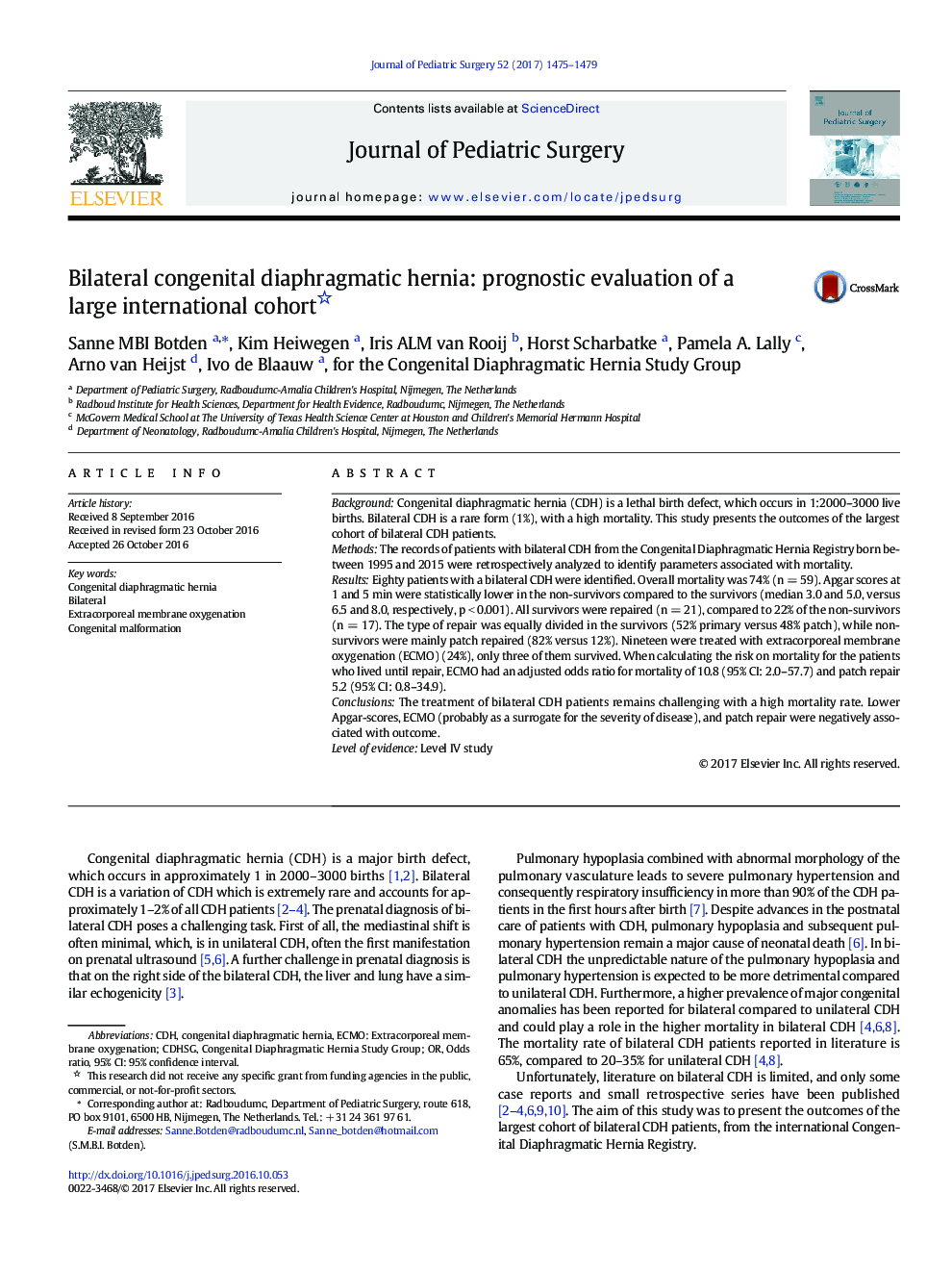| Article ID | Journal | Published Year | Pages | File Type |
|---|---|---|---|---|
| 5718289 | Journal of Pediatric Surgery | 2017 | 5 Pages |
BackgroundCongenital diaphragmatic hernia (CDH) is a lethal birth defect, which occurs in 1:2000-3000 live births. Bilateral CDH is a rare form (1%), with a high mortality. This study presents the outcomes of the largest cohort of bilateral CDH patients.MethodsThe records of patients with bilateral CDH from the Congenital Diaphragmatic Hernia Registry born between 1995 and 2015 were retrospectively analyzed to identify parameters associated with mortality.ResultsEighty patients with a bilateral CDH were identified. Overall mortality was 74% (n = 59). Apgar scores at 1 and 5 min were statistically lower in the non-survivors compared to the survivors (median 3.0 and 5.0, versus 6.5 and 8.0, respectively, p < 0.001). All survivors were repaired (n = 21), compared to 22% of the non-survivors (n = 17). The type of repair was equally divided in the survivors (52% primary versus 48% patch), while non-survivors were mainly patch repaired (82% versus 12%). Nineteen were treated with extracorporeal membrane oxygenation (ECMO) (24%), only three of them survived. When calculating the risk on mortality for the patients who lived until repair, ECMO had an adjusted odds ratio for mortality of 10.8 (95% CI: 2.0-57.7) and patch repair 5.2 (95% CI: 0.8-34.9).ConclusionsThe treatment of bilateral CDH patients remains challenging with a high mortality rate. Lower Apgar-scores, ECMO (probably as a surrogate for the severity of disease), and patch repair were negatively associated with outcome.Level of evidenceLevel IV study
